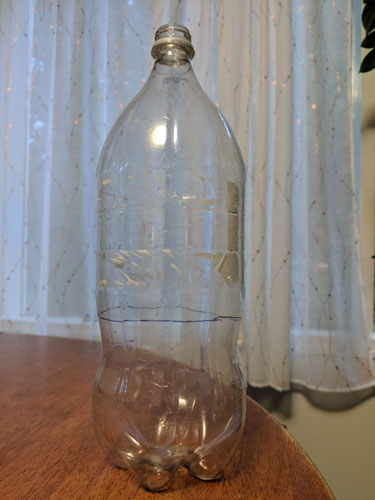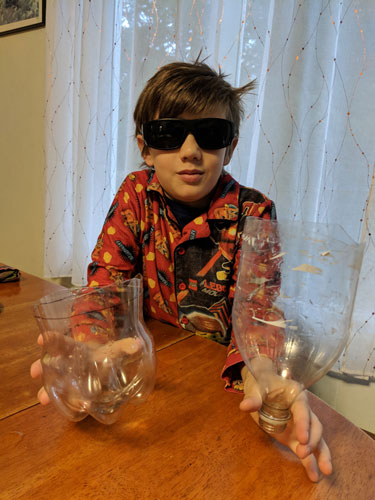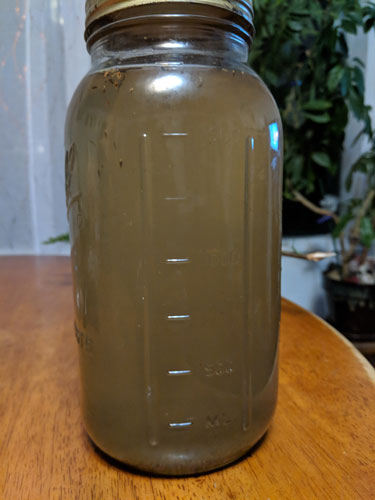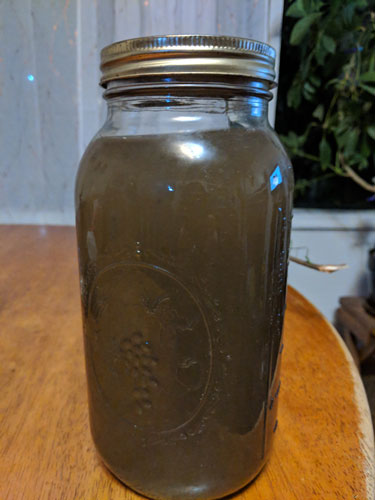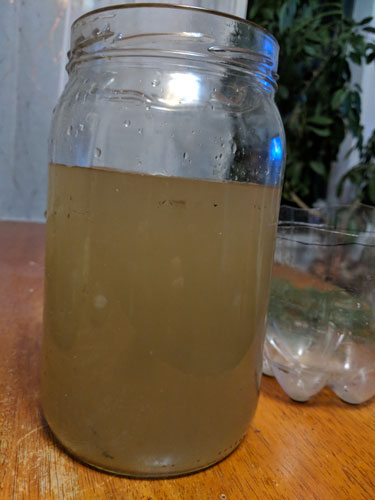Lifestraw or some other water filters are great, and if you have one you should use it. But what if you don’t have one?
I knew that you could make a water filter from some basic materials that you probably already have at hand like sand and a 2-liter soda bottle. I tried it out. While it worked, as you’ll be able to see from the photos, I can’t really recommend it as a great solution. The filtered water was barely any better than the muddy water that had been left to sit for a couple days. Let’s see how it worked out…
Start by finding an empty water bottle like a small soda bottle or a 2-liter bottle. If those aren’t available, you can use a milk jug or a laundry soap bottle. The idea is something that has a smaller top than it does a bottom. You will want to cut the item in half or collect two items, so that the item with the smaller top is draining into a collection reservoir of some sort.
If you cut a bottle in half, the idea is that the bottom half becomes the reservoir for the top half, which is turned upside down in order to be used. Save the cap! Here, my son demonstrates the cut bottle.
Cut a small hole in the cap. This is the water outlet. Some DIY water filters recommend filtering the large sediment through a coffee filter first. You can also accomplish this by filtering the large sediment through a t-shirt. Other DIY water filters will suggest that you tie on the coffee filter to the bottom of the spout, so that the coffee filter is the last filter that the water goes through before you drink it. Either way, it works. Personally I’d rather my water go through the finest filter last. And that also helps keep the sand from slipping through the hole in the lid.
Depending on what you have available, your water filter can have different layers. If you have charcoal from your firepit, you can use some large and small pieces. Pack it down fairly well. On top of the charcoal pour in fine sand, as fine as you can find it. On top of the sand pour in course sand. On top of the course sand pour in gravel. On top of the gravel pour on large gravel or pebbles. You want thick layers of each material.
I used only sand and then larger pea gravel-sized rocks. I put a layer of moss on the top. In some parts of the country you won’t find moss. In that case, you can use a thick layer of pine needles or other tree needles. Here’s mine:

Pour your dirty water through the top and let it trickle through into the catch basin. If you’re not sure it’s clean of microbes, use the solar disinfectant method. This involves leaving the water in a clear bottle in the sun for a say or two, to let the solar UV light disinfect it. I’m told it works, although I’ve never actually tested it with giardia water to be sure. If you have, do let us know!
Here’s the water I used. The photo on the left shows the water after it had been left to sit and the sediment settled on the bottom after a couple of days. The photo on the right shows what the water looked like after I shook it all up.
I was actually surprised at how fast the water ran through the sand and coffee filter. I thought it would take a lot longer, but the water ran through fairly freely. Here’s what the water looked like after it had gone through the filter.

I thought it might be improved by running it through a second time, but that did not make a noticeable difference.

As you can see from our comparison here, the filtered water was barely cleaner than the water that had settled. Bottom line…use a filter like this if you have the materials at hand and it’s not a hassle to gather the stuff and make it. Otherwise, just let your water site for a couple days if you can. If you’re worried about organisms in the water, boil it before drinking or use your water bottle to use the solar cleaning method. This can work by placing the water bottle in full sun so it heats up the water enough to kill the little critters.

